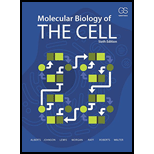
Concept explainers
44322-24-1P
To examine: Whether the statement “T cells whose receptors strongly bind a self-peptide-MHC complex are killed off in peripheral lymphoid organs when they encounter the self peptide on an antigen-presenting dendritic cell” is true or false.
Introduction: Immunological tolerance is the state of unresponsiveness to a particular antigen due to an earlier exposure to the same antigen. There are two types of immunological tolerance: central tolerance and peripheral tolerance. Any defect in immune self-tolerance causes autoimmune diseases.
Answer to Problem 1P
Correct answer: The statement is true.
Explanation of Solution
The host immune system in normal conditions is able to avoid responding to normal cells and molecules. Refer to Fig. 24-21 “Mechanisms of immunological self-tolerance” in the textbook. Several mechanisms in the central lymphoid organs and peripheral lymphoid organs are involved in the self-tolerance of immune cells, including receptor editing, clonal deletion, clonal inactivation, and clonal suppression.
For the activation of the T lymphocytes in the peripheral lymphoid organs, it requires co-stimulatory immune signals generated by helper T cells (TH cells), when pathogens are present. In normal conditions, a self-reactive T cell does not generate these co-stimulatory immune signals and fails to get activated. Instead, it gets inactivated, suppressed by a regulatory T cell or killed.
Thus, in the peripheral lymphoid organs, if a T lymphocyte binds to a self-peptide-MHC complex presented on an antigen-presenting cell (APC) such as dendritic cell, it would be killed by the mechanisms of immune self-tolerance.
Hence, the statement is true.
Want to see more full solutions like this?
Chapter 24 Solutions
Molecular Biology of the Cell (Sixth Edition)
 Human Anatomy & Physiology (11th Edition)BiologyISBN:9780134580999Author:Elaine N. Marieb, Katja N. HoehnPublisher:PEARSON
Human Anatomy & Physiology (11th Edition)BiologyISBN:9780134580999Author:Elaine N. Marieb, Katja N. HoehnPublisher:PEARSON Biology 2eBiologyISBN:9781947172517Author:Matthew Douglas, Jung Choi, Mary Ann ClarkPublisher:OpenStax
Biology 2eBiologyISBN:9781947172517Author:Matthew Douglas, Jung Choi, Mary Ann ClarkPublisher:OpenStax Anatomy & PhysiologyBiologyISBN:9781259398629Author:McKinley, Michael P., O'loughlin, Valerie Dean, Bidle, Theresa StouterPublisher:Mcgraw Hill Education,
Anatomy & PhysiologyBiologyISBN:9781259398629Author:McKinley, Michael P., O'loughlin, Valerie Dean, Bidle, Theresa StouterPublisher:Mcgraw Hill Education, Molecular Biology of the Cell (Sixth Edition)BiologyISBN:9780815344322Author:Bruce Alberts, Alexander D. Johnson, Julian Lewis, David Morgan, Martin Raff, Keith Roberts, Peter WalterPublisher:W. W. Norton & Company
Molecular Biology of the Cell (Sixth Edition)BiologyISBN:9780815344322Author:Bruce Alberts, Alexander D. Johnson, Julian Lewis, David Morgan, Martin Raff, Keith Roberts, Peter WalterPublisher:W. W. Norton & Company Laboratory Manual For Human Anatomy & PhysiologyBiologyISBN:9781260159363Author:Martin, Terry R., Prentice-craver, CynthiaPublisher:McGraw-Hill Publishing Co.
Laboratory Manual For Human Anatomy & PhysiologyBiologyISBN:9781260159363Author:Martin, Terry R., Prentice-craver, CynthiaPublisher:McGraw-Hill Publishing Co. Inquiry Into Life (16th Edition)BiologyISBN:9781260231700Author:Sylvia S. Mader, Michael WindelspechtPublisher:McGraw Hill Education
Inquiry Into Life (16th Edition)BiologyISBN:9781260231700Author:Sylvia S. Mader, Michael WindelspechtPublisher:McGraw Hill Education





